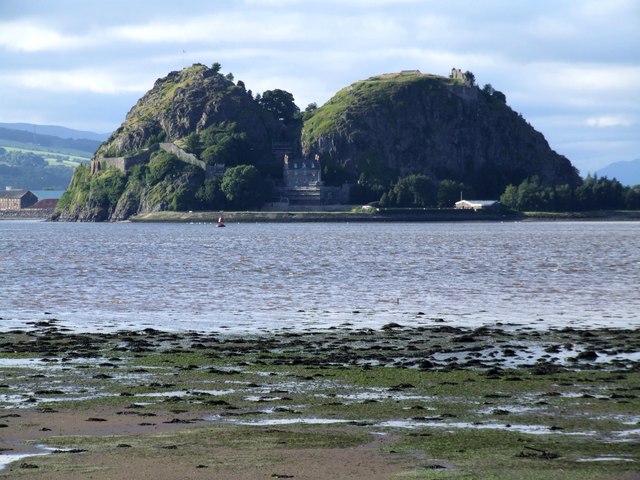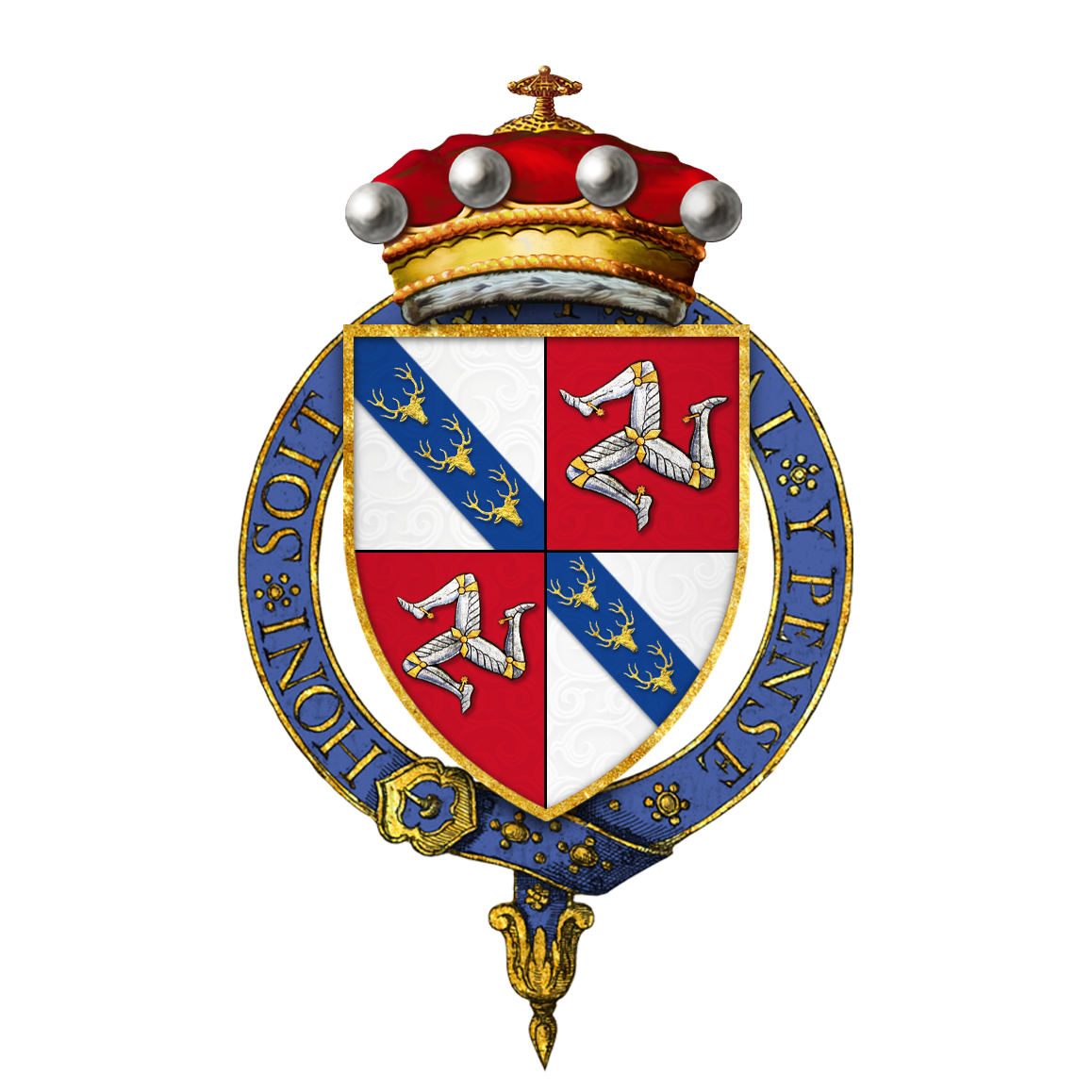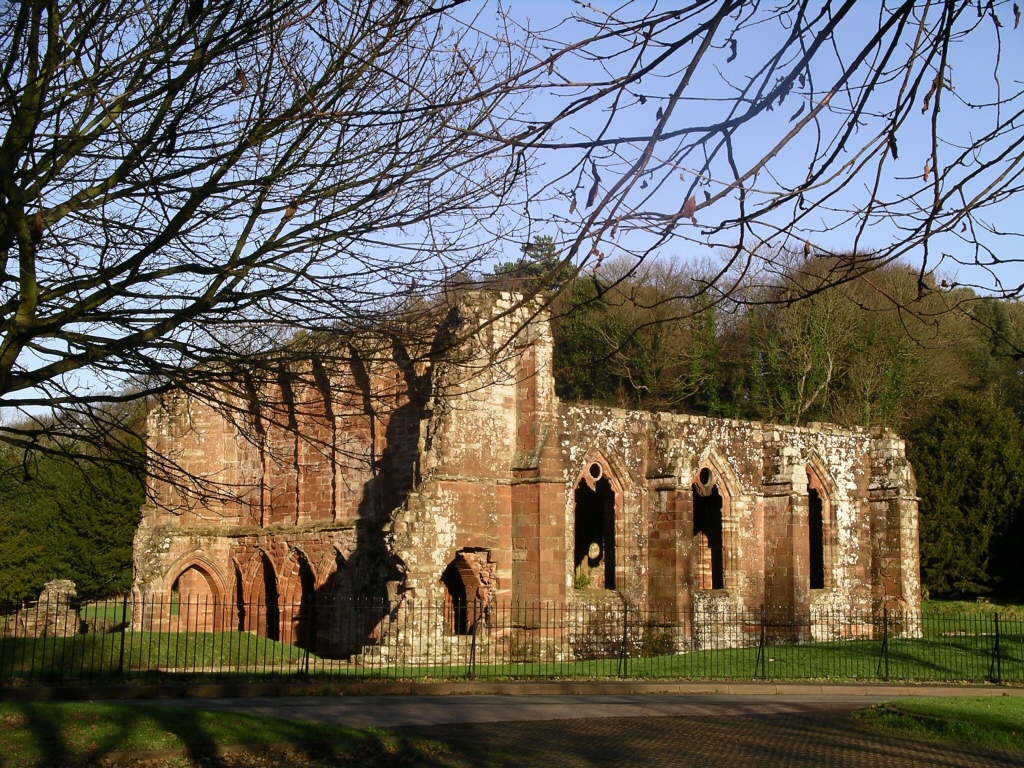|
William Russell (bishop Of Sodor)
William Russell (died 1374) was a fourteenth-century Cistercian prelate. He appears to have begun his career as a Cistercian monk at Rushen Abbey on the Isle of Man (Mann), ascending to the rank of abbot there, before being elected Bishop of Mann and the Isles (Sodor). After traveling to Continental Europe for confirmation and consecration, avoiding a trip to the metropolitan in Norway, he returned to the Irish Sea as a legal bishop. A few things are known of his episcopate, particularly his activities in England and a series of provincial statutes apparently promulgated under his leadership. Abbot of Rushen and election as bishop A native of Mann, an island in the Irish Sea south of Galloway in Scotland, for eighteen years he was the abbot of Rushen Abbey.Christian, "Russell, William (d. 1374)". In either 1348 or 1349 he was elected Bishop of Mann and the Isles. Papal letters reveal that the see had recently been made vacant by the death of Thomas de Rossy, and that the ... [...More Info...] [...Related Items...] OR: [Wikipedia] [Google] [Baidu] |
List Of The Bishops Of The Diocese Of Sodor And Man
The Bishop of Sodor and Man is the Ordinary of the Diocese of Sodor and Man (Manx Gaelic: ''Sodor as Mannin'') in the Province of York in the Church of England. The diocese only covers the Isle of Man. The Cathedral Church of St German where the bishop's seat is located, is in the town of Peel. St German's was elevated to cathedral status on 1 November 1980. The bishop is an ''ex officio'' member of the Legislative Council of the Isle of Man (the upper house of Tynwald, the parliament of the Isle of Man) and of Tynwald Court. The bishop's residence is Thie yn Aspick (Bishop's House), Douglas. The right to appoint the Bishop of Sodor and Man is vested in the British crown; the Monarch acts, perhaps somewhat anomalously (in view of Man's status as a Crown Dependency), on the advice of the Prime Minister. However, unlike diocesan bishops in England, who are formally elected by the canons of the cathedral church in accordance with the monarch's '' congé d'elire'', the Bishop o ... [...More Info...] [...Related Items...] OR: [Wikipedia] [Google] [Baidu] |
Norway
Norway, officially the Kingdom of Norway, is a Nordic country in Northern Europe, the mainland territory of which comprises the western and northernmost portion of the Scandinavian Peninsula. The remote Arctic island of Jan Mayen and the archipelago of Svalbard also form part of Norway. Bouvet Island, located in the Subantarctic, is a dependency of Norway; it also lays claims to the Antarctic territories of Peter I Island and Queen Maud Land. The capital and largest city in Norway is Oslo. Norway has a total area of and had a population of 5,425,270 in January 2022. The country shares a long eastern border with Sweden at a length of . It is bordered by Finland and Russia to the northeast and the Skagerrak strait to the south, on the other side of which are Denmark and the United Kingdom. Norway has an extensive coastline, facing the North Atlantic Ocean and the Barents Sea. The maritime influence dominates Norway's climate, with mild lowland temperatures on the se ... [...More Info...] [...Related Items...] OR: [Wikipedia] [Google] [Baidu] |
Isle Of Bute
The Isle of Bute ( sco, Buit; gd, Eilean Bhòid or '), known as Bute (), is an island in the Firth of Clyde in Scotland, United Kingdom. It is divided into highland and lowland areas by the Highland Boundary Fault. Formerly a constituent island of the larger County of Bute, it is now part of the council area of Argyll and Bute. Bute's resident population was 6,498 in 2011, a decline of just over 10% from the figure of 7,228 recorded in 2001 against a background of Scottish island populations as a whole growing by 4% to 103,702 for the same period. Name The name "Bute" is of uncertain origin. Watson and Mac an Tàilleir support a derivation from Old Irish ' ("fire"), perhaps in reference to signal fires.Watson (1926) pp 95–6Mac an Tàilleir (2003) p. 24 This reference to beacon fires may date from the Viking period, when the island was probably known to the Norse as '. Other possible derivations include Brittonic ''budh'' ("corn"), "victory", , or ', his monastic cell. ... [...More Info...] [...Related Items...] OR: [Wikipedia] [Google] [Baidu] |
Robert II Of Scotland
Robert II (2 March 1316 – 19 April 1390) was King of Scots from 1371 to his death in 1390. The son of Walter Stewart, 6th High Steward of Scotland, and Marjorie, daughter of King Robert the Bruce, he was the first monarch of the House of Stewart. Upon the death of his uncle David II, Robert succeeded to the throne. Edward Bruce, younger brother of Robert the Bruce, was named heir presumptive but died childless on 3 December 1318. Marjorie Bruce had died probably in 1317 in a riding accident and Parliament decreed her infant son, Robert Stewart, as heir presumptive, but this lapsed on 5 March 1324 on the birth of a son, David, to King Robert and his second wife, Elizabeth de Burgh. Robert Stewart became High Steward of Scotland on his father's death on 9 April 1327, and in the same year Parliament confirmed the young Steward as heir should David die childless. In 1329 King Robert I died and his five-year-old son succeeded to the throne as David II under the guardianship of Thom ... [...More Info...] [...Related Items...] OR: [Wikipedia] [Google] [Baidu] |
King Of Mann
The King of Mann () was the title taken between 1237 and 1504 by the various rulers, both sovereign and suzerain, over the Kingdom of Mann – the Isle of Man which is located in the Irish Sea, at the centre of the British Isles. Since 1504, the head of state has been known as the Lord of Mann. Celtic Kings of Ynys Manaw (before 836) * Tutagual Theodovellaunus (c. 485–c. 495); son of Cinuit, also king of Alt Clut and Galwyddel *Dingat (c. 495); son of Tutagual, also king of Galwyddel * (c. 550); son of Dingat, exiled king of Galwyddel * (c. 575), son of Sennylt Hael *Diwg (c. 600s), client king of Áedán mac Gabráin of Dál Riata * Edwin of Northumbria (620–633), also king of Bernicia and Deira * (until c. 682), descendant of Magnus Maximus * (from c. 682), son of Merfyn Fawr * (c. 710), son of Anarawd *Sandde (c. 730), descendant of Llywarch Hen of Rheged, husband of Celemion daughter of Tudwal *Elidyr (c. 790), son of Sandde * Gwriad (until 825), son of Elidyr, mar ... [...More Info...] [...Related Items...] OR: [Wikipedia] [Google] [Baidu] |
William Montacute, 2nd Earl Of Salisbury
William Montagu, 2nd Earl of Salisbury, 4th Baron Montagu, King of Mann, KG (25 June 1328 – 3 June 1397) was an English nobleman and commander in the English army during King Edward III's French campaigns in the Hundred Years War. He was one of the Founder Knights of the Order of the Garter. Biography Lord Salisbury was born in Donyatt in Somerset, the eldest son of William Montagu, 1st Earl of Salisbury and his wife Catherine Grandison. One of his sisters, Philippa (d. 5 January 1382) was the wife of Roger Mortimer, 2nd Earl of March. Lord Salisbury succeeded his father as earl in 1344. On 13 July 1346, he was made a Knight Bachelor. In 1348, Lord Salisbury, at this time married to the King's first cousin, was one of the knights admitted at the foundation of the Order of the Garter. First marriage In the early 1340s, Lord Salisbury was married to Joan of Kent, a first cousin of the King, and a princess of England. Both Lord Salisbury and his bride were of exactly the same ... [...More Info...] [...Related Items...] OR: [Wikipedia] [Google] [Baidu] |
Cardinal-bishop Of Ostia
The Roman Catholic Suburbicarian Diocese of Ostia is an ecclesiastical territory located within the Metropolitan City of Rome in Italy. It is one of the seven suburbicarian dioceses. The incumbent Bishop is cardinal Giovanni Battista Re. Since 1150, its bishop has been the Dean of the College of Cardinals, Its Cathedral is Basilica di Sant'Aurea. From 1105 to 1914, the diocese was merged with the Suburbicarian Diocese of Velletri. In 1962, the Diocese of Ostia was brought under the direct administration of the Diocese of Rome. Bishops Bishops of Ostia (-1057) * aximus (259):... *Maximus (313) *Florentius (366) :''...'' *Bonus (487). *Bellator (499) *Aristus (502) :... *Amabile (649) :... *Andrea(s) (680) :... *Sissinio 732 – before 745 *Theodorus (745) * George I, 753–786 :''...'' * Gregory I, 787 – before 804 * Bernard 804–805 * Peter I 805 – before 826 * Cesareo 826–854 * Megisto (or Leo I), 854–868 * Donatus, 868–870 :''sede vacante 870–878'' * Eugenius, 8 ... [...More Info...] [...Related Items...] OR: [Wikipedia] [Google] [Baidu] |
Bertrand Du Pouget
Bertrand du Pouget (Italian ''Bertrando del Poggetto'') (1280 – 3 February 1352) was a French papal diplomat and Cardinal. Bertrand was born in Castelnau-Montratier. He may have been a nephew of Pope John XXII. As cardinal he was closely involved in dealing with the practical consequences of the migration of the papacy to Avignon, and also in striving to uphold papal prestige in Italy, for example by artistic commissions in Bologna. He expelled Galeazzo I Visconti, imperial vicar for Emperor Henry VII, from Piacenza and in 1329 arranged for a public burning of Dante's ''De monarchia''. He was created cardinal priest of S. Marcello in 1316, and became bishop of Ostia in 1327. He participated in the conclave of 1334 that elected Pope Benedict XII and the conclave of 1342 that elected Pope Clement VI. He died at Villeneuve-lès-Avignon. Notes See also *''The Name of the Rose'' - a historical novel by Umberto Eco Umberto Eco (5 January 1932 – 19 February 2016) w ... [...More Info...] [...Related Items...] OR: [Wikipedia] [Google] [Baidu] |
Pope Clement VI
Pope Clement VI ( la, Clemens VI; 1291 – 6 December 1352), born Pierre Roger, was head of the Catholic Church from 7 May 1342 to his death in December 1352. He was the fourth Avignon pope. Clement reigned during the first visitation of the Black Death (1348–1350), during which he granted remission of sins to all who died of the plague. Roger steadfastly resisted temporal encroachments on the Church's ecclesiastical jurisdiction and, as Clement VI, entrenched French dominance of the Church and opened its coffers to enhance the regal splendour of the Papacy. He recruited composers and music theorists for his court, including figures associated with the then-innovative Ars Nova style of France and the Low Countries. Early life Birth and family Pierre Roger (also spelled Rogier and Rosiers) was born in the château of Maumont, today part of the commune of Rosiers-d'Égletons, Corrèze, in Limousin, France, the son of the lord of Maumont-Rosiers-d'Égletons. He had an elder ... [...More Info...] [...Related Items...] OR: [Wikipedia] [Google] [Baidu] |
Manx Chronicle
The ''Chronicles of the Kings of Mann and the Isles'' – British Library ( la, Chronica Regum Manniæ et Insularum) or Manx Chronicle London, British Library, Cotton MS Julius A. VII, ff. 31r-52r is a manuscript relating the early history of the [...More Info...] [...Related Items...] OR: [Wikipedia] [Google] [Baidu] |
Furness Abbey
Furness Abbey, or St. Mary of Furness, is a former Catholic monastery located to the north of Barrow-in-Furness, Cumbria, England. The abbey dates back to 1123 and was once the second-wealthiest and most powerful Cistercian monastery in the country, behind Fountains Abbey, prior to its dissolution during the English Reformation.History of the abbey The abbey contains a number of individual Grade I s and is a . History of the abbey Early history [...More Info...] [...Related Items...] OR: [Wikipedia] [Google] [Baidu] |
Scotland
Scotland (, ) is a country that is part of the United Kingdom. Covering the northern third of the island of Great Britain, mainland Scotland has a border with England to the southeast and is otherwise surrounded by the Atlantic Ocean to the north and west, the North Sea to the northeast and east, and the Irish Sea to the south. It also contains more than 790 islands, principally in the archipelagos of the Hebrides and the Northern Isles. Most of the population, including the capital Edinburgh, is concentrated in the Central Belt—the plain between the Scottish Highlands and the Southern Uplands—in the Scottish Lowlands. Scotland is divided into 32 administrative subdivisions or local authorities, known as council areas. Glasgow City is the largest council area in terms of population, with Highland being the largest in terms of area. Limited self-governing power, covering matters such as education, social services and roads and transportation, is devolved from the Scott ... [...More Info...] [...Related Items...] OR: [Wikipedia] [Google] [Baidu] |








